Methods for combating tomato cladosporium disease (brown spot) and resistant varieties
Tomato cladosporium disease is a fungal disease that spreads quickly and if you do not take action, the entire crop dies. A humid environment is considered a favorable environment for the development of brown spotting. Tomatoes can get sickgrowing both in the greenhouse and in the open field.
Signs of illness
Fungal infection of tomatoes, cladosporia, is difficult to recognize in the early stages, since the color of the inner side of the leaves changes. Pale areas are formed on the green background of the tomato leaf, which gradually turn brown. Over time, yellow spots of various sizes appear on the outside of the tomato leaf, which darken as the infection spreads.
Fruits are also affected by disease. Tomatoes do not ripen and often rot. A characteristic feature of the infection is that the pathogen can remain active in favorable conditions throughout the year. Does not die at too low or high temperatures.
Spores of the fungus on a tomato bush can be brought along with garden tools or during watering, they are easily airborne. They can be in the ground all winter, and after planting new seedlings in high humidity conditions, they begin their harmful activity.
In a greenhouse, the risk of tomato disease is less, but provided that the necessary moisture level is maintained. If it is above 70%, the risk becomes greater. Therefore, it is very important to monitor the watering of the tomatoes and the timely airing of the room.
If at the initial stage no measures were taken to combat cladosporia, then the leaves of the tomatoes begin to deform, curl, dry out and fall off. The ability to form fruit is reduced.
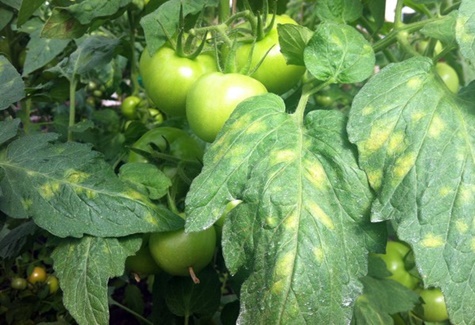
Warm and humid weather contributes to the rapid spread of fungal infection. If the summer is characterized by similar conditions, then you need to take care of the prevention of cladosporiosis.
There are many ways to combat and drugs for tomato cladosporium disease. You can use the compositions of folk recipes, ready-made preparations, as well as get acquainted with all kinds of preventive measures.
Preventive actions
Cladosporium disease in tomatoes can be prevented. How to fight so that the problem does not bother? There are a number of preventive measures that can help prevent brown spotting or reduce the risk of its development to a minimum:
- if tomatoes are grown in a greenhouse, then it is necessary to maintain air humidity within 70%;
- the greenhouse room must be ventilated and periodically disinfected;
- if there is a lot of lime in the soil, then it is useful to add sand;
- before planting tomato seedlings, it is recommended to water the soil with water with the addition of a few drops of potassium permanganate;
- tomato bushes should be planted at a distant distance so that light and air can freely flow to all parts of the plant;
- worth water the tomatoes as the soil dries up;
- in the fall, it is imperative to remove all the tops from the beds (it is better to burn it).
Helps reduce the risk of cladosporium infestation in tomatoes by mulching the soil. As mulch for tomatoes, you can use sawdust, chopped grass, plastic wrap.
To increase the resistance to cladosporia, you can pour the infusion of herbs and garlic over the tomatoes. Nettle, dandelion are best. The herbs are crushed and thin slices of garlic are added, poured with water, left to infuse for two days.
To a greater extent, preventive measures concern tomatoes grown in the greenhouse.
It is in a closed room that there is a high probability of settling an infection that is difficult to remove. For open ground, the best prophylactic against cladosporiosis is the choice of a fungus resistant variety.

Varieties with high resistance to fungus
Brown spot of tomatoes is safe for humans. However, the yield is declining and the tomatoes are much smaller than the stated size. Their taste may also suffer.
It is best to play it safe and pick up varieties of tomatoes that are resistant to brown spot. For the 2018 harvest, you can pick up the following varieties of tomatoes.
Tomatoes Pink Paradise F1 are characterized by medium fruit ripening limits, and have a high yield. The stem can be up to 2 meters high. Growing in greenhouses is preferred. The variety is resistant to cladosporium disease. Garter, formation and removal of lateral leaves are required. The average weight of ripe pink tomatoes is 135 g.
Marissa F1 can reach a height of 3 meters, therefore, a support for tying is installed. As the tomato grows, it is necessary to carry out pinching and shaping the stem. Flattened tomatoes, red in color, weigh about 150 g. Cladosporiosis often bypasses this variety.
Among the tomatoes resistant to cladosporiosis, the variety Kukla Masha F1 is known. It belongs to the determinant group. The height of the bush does not exceed 85 cm. The ripening dates are medium early. Rounded pink fruits can weigh 250 g. The large harvest is well stored and transported.
Vezha is an indeterminate tomato variety with medium ripening times. Mass of ripe red tomatoes is about 110 g. They show high tolerance to cladosporia and other diseases.
Funtik F1 is a hybrid intended for cultivation in greenhouses, and only the southern regions can allow tomatoes to be planted outdoors. Tomatoes begin to ripen after 129 days. The plant belongs to the indeterminate group, the stem reaches a height of 2 meters.
Octopus F1 indeterminate tomato tree, can reach a height of 5 meters. It is imperative to establish a powerful support, a lot of space and light. Tomatoes are arranged in 5-6 pieces per branch and can weigh about 250 g.
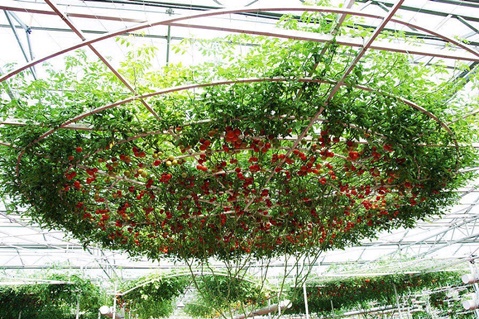
Fighting the disease
How to deal with a fungus found on tomatoes? In the case when the brown spotting of tomatoes has already appeared, the control measures will depend on the stage of its development. At the initial stage, if leaves with light spots are found on a tomato bush, you need to get rid of them.
If the spot on the tomatoes is dark brown, then it is better to remove the seedling from the garden along with the roots, and it is useful to treat the remaining plants with preparations containing copper.
Such a fungal disease of tomatoes, such as cladosporium or brown spot, can be cured with folk recipes or purchased store-bought drugs.
Self-preparation compositions for tomatoes from cladosporia.
- If brown spots are found on tomato leaves, the following solution can be used. Add 30 g of potassium chloride and 40 drops of iodine to a bucket of water. Iodine disinfects the soil and plant surfaces, prevents the proliferation of spores, and reduces the risk of re-infection.
- You can add a liter of whey and 20 drops of iodine to a bucket of water. Such a composition saturates tomato bushes with the necessary nutrients, increases disease resistance and stops the spread of fungal spores.
- Yeast helps fight cladosporia. This component not only destroys the fungus, but also contributes to the active development of the culture. Both dry and live yeast can be diluted in a bucket of water.
- An infusion of wood ash can cope with cladosporia. It is left to soak in water for about three days. Before processing the soil, dilute with infusion with water and add shavings of soap.
- You can try to alternately water the tomatoes with a weak solution of potassium permanganate and ash infusion. For infusion, it is necessary to pour 300 g of ash with 10 liters of water, put it on fire and keep it for another 15 minutes after boiling. Then leave to infuse for two days.
Among ready-made compositions for tomatoes, such preparations as Hom, Poliram, Fitosporin, Quadris are very popular and effective.
Hom preparation effectively protects the plant from brown spot. After treatment, a thin film is created on the leaves and stem, which protects for about two weeks. Dissolve 40 g of solution in 10 liters of water.
Processing is best done in the evening, when there is no wind or rain.
Brown leaf spot is treated with Poliram. The granules dissolve easily in water. You can process it no more than 3 times during the growing season. The validity period lasts three weeks. The advantage of the drug is absolute harmlessness to humans and insects, stops the reproduction of spores, does not cause addiction.
The biological product Fitosporin inhibits the growth and spread of fungal infection, disinfects the soil surface, and increases the resistance of plants to infection. For tomatoes for 10 liters of water, you need to take 5 g of the drug.
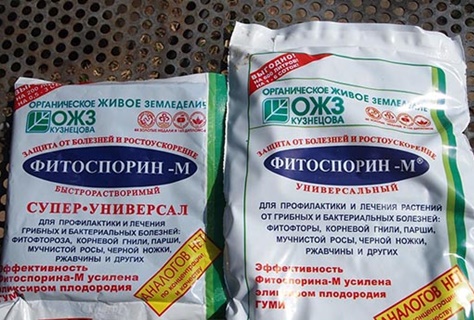
The drug Quadris can be used for the prevention and treatment of tomatoes. Possesses high efficiency against fungi, destroys their spores, does not pose a threat to the environment. Spraying can be done at intervals of two weeks.
Treatment of tomatoes from cladosporia by many experienced gardeners is carried out with the help of drugs such as Trichopolum, Metronidazole, Furacilin.
Watering tomatoes with Metronidazole is best in early summer. It is recommended to dissolve 13-15 tablets of the drug in a liter of water. The resulting solution can be used to wipe the leaves themselves.
Tomatoes can be treated with Trichopol every 10-14 days. Calculate one tablet per liter of water. The antibiotic works against many pathogens and protects against re-infection.
The drug Furacilin will help to cope with cladosporia among tomatoes. Dissolve one tablet in a liter of water. During the entire growing season, tomatoes can be processed with this preparation three times.
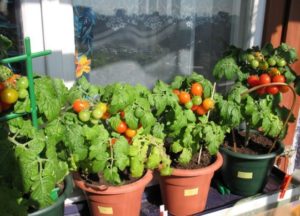
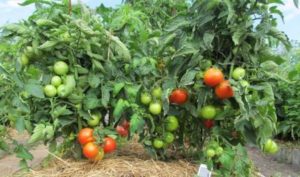
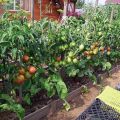
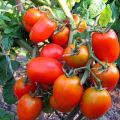

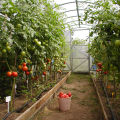




Fitosporin is absolutely useless against cladosporia, in any concentration. Before you write something, you need to try, experience. Metronidazole can lead to Parkinson's disease, think three times or better ten times before using it on your own site